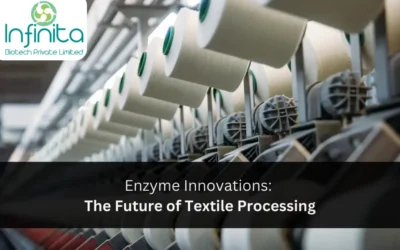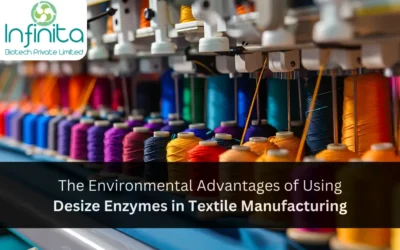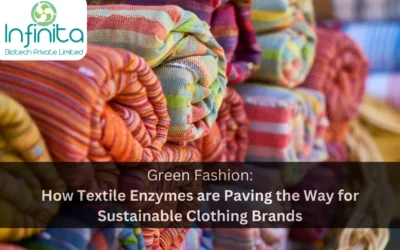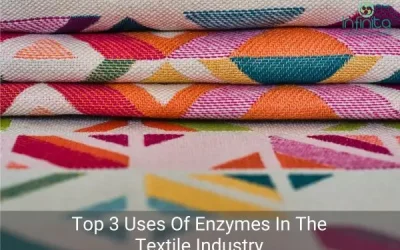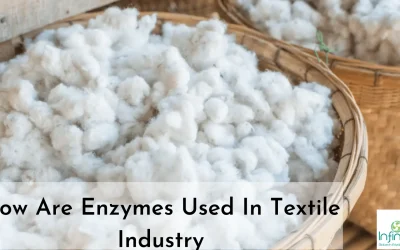Textile enzymes play a crucial role in the production of eco-friendly fabrics. By utilizing the power of enzymes, textile manufacturers can reduce the environmental impact of fabric production while still maintaining high-quality products. In this article, we will explore the various aspects of textile enzymes, their connection to eco-friendly fabric, the process of using them in fabric production, the challenges faced, and the economic implications.
Understanding Textile Enzymes
Textile enzymes are biological catalysts that accelerate chemical reactions in textile manufacturing processes. They have gained significant popularity in recent years due to their ability to improve the efficiency of fabric production while minimizing the use of harsh chemicals.
### What are Textile Enzymes?
Textile enzymes are naturally occurring proteins that possess the capability to break down and modify textile fibers, such as cotton, silk, and wool. They act on specific substances present in the fibers, resulting in desirable changes in their properties.
The Science Behind Textile Enzymes
Enzymes function by binding to specific molecules known as substrates and facilitating chemical reactions. In the case of textile enzymes, they target components like starches, proteins, and pectins that are present in textile fibers, causing them to degrade or modify in a controlled manner. This enzymatic action imparts desired characteristics to the fabric, such as softness, color fading resistance, and improved dye uptake.
One fascinating aspect of textile enzymes is their specificity. Each type of enzyme is designed to target a particular substrate, ensuring precision in the modification process. For example, cellulases are enzymes that specifically break down cellulose, a major component of plant-based fibers like cotton and linen. By selectively acting on cellulose, these enzymes can enhance the texture and appearance of the fabric without affecting other components.
Applications of Textile Enzymes
Textile enzymes find a wide range of applications in the textile industry. From desizing and bio-polishing to stone washing and color brightening, these enzymes play a crucial role in enhancing the quality and aesthetics of textiles. Desizing enzymes, for instance, help in removing starch-based sizing agents from newly woven fabrics, improving their absorbency and dyeability.
The Connection Between Textile Enzymes and Eco-Friendly Fabric
Textile enzymes contribute significantly to the production of eco-friendly fabrics by minimizing the use of harmful chemicals, reducing water consumption, and minimizing waste generation.
When it comes to eco-friendly fabric production, textile enzymes play a crucial role in promoting sustainability. By harnessing the power of enzymes, textile manufacturers can achieve significant reductions in their environmental footprint. Enzymes are biodegradable and renewable, making them a more sustainable choice compared to traditional chemical agents.
How Textile Enzymes Contribute to Sustainability
One of the key advantages of using textile enzymes is their ability to replace or reduce the use of chemical agents during fabric production. Enzymes perform specific tasks more efficiently compared to traditional chemical methods, reducing the overall quantity of chemicals needed. This results in a reduced environmental burden in terms of pollution and waste disposal.
Moreover, textile enzymes are highly specific in their action, targeting only the substances they are designed to break down. This specificity minimizes the risk of unintended environmental consequences, ensuring a cleaner and greener production process. By utilizing enzymes, fabric manufacturers can achieve the same level of quality and functionality in their products while significantly reducing their ecological impact.
The Environmental Impact of Traditional Fabric Production
Traditional fabric production methods often involve the use of harsh chemicals, such as alkalis, acids, and surfactants, which can have detrimental effects on the environment. These chemicals can pollute water bodies, release toxic gases during production, and contribute to the depletion of natural resources. In contrast, textile enzymes offer a greener alternative with significantly lower environmental impact.
By transitioning to enzyme-based processes, the textile industry can move towards a more sustainable future where fabric production is not only efficient and cost-effective but also environmentally friendly. The adoption of textile enzymes represents a paradigm shift in the way fabrics are manufactured, paving the way for a cleaner and healthier planet for future generations.
The Process of Using Textile Enzymes in Fabric Production
Textile enzymes find application in various stages of fabric production, such as dyeing, finishing, and softening. Their usage involves specific techniques and considerations to ensure optimal results.
When it comes to fabric production, the use of textile enzymes has revolutionized the industry by offering a more sustainable and efficient approach. These enzymes are biodegradable and eco-friendly, making them a preferred choice for manufacturers looking to reduce their environmental impact. By harnessing the power of enzymes, fabric production can be more resource-efficient and less harmful to the planet.
The Role of Textile Enzymes in Dyeing and Finishing
Dyeing is a crucial step in fabric production as it imparts color to the fabric. Textile enzymes facilitate the dyeing process by improving dye absorption, reducing dyeing time, and enhancing color fastness. Additionally, enzymes aid in the removal of impurities and undesirable elements, resulting in cleaner and more vibrant fabrics.
Moreover, textile enzymes offer a more precise and controlled way of dyeing fabrics, ensuring uniform color distribution and reducing the risk of color bleeding or fading over time. This level of consistency is crucial for manufacturers looking to meet strict quality standards and deliver products that meet consumer expectations.
Textile Enzymes in Fabric Softening and Conditioning
Fabric softening is essential to enhance the comfort and feel of textile products. Enzymes play a vital role in breaking down stiff fibers and reducing friction between them, resulting in softer, more pliable fabrics. Furthermore, enzymes can assist in conditioning fabrics by removing residues, improving breathability, and reducing static cling.
By incorporating textile enzymes into the softening process, manufacturers can create luxurious and high-quality fabrics that provide a superior tactile experience for consumers. The use of enzymes ensures that fabrics remain soft and supple even after multiple washes, prolonging the lifespan of the product and enhancing customer satisfaction.
Challenges and Solutions in Implementing Textile Enzymes
While textile enzymes offer several advantages, their implementation in fabric production does come with certain challenges. However, through technological advancements and innovative approaches, these challenges can be overcome.
One key challenge in the implementation of textile enzymes is the need for specialized equipment and infrastructure to ensure efficient and effective enzyme application. Textile manufacturers may need to invest in upgrading their production facilities to accommodate the use of enzymes, which can sometimes be a barrier to adoption. However, companies offering enzyme solutions often provide guidance and support to help businesses navigate this transition smoothly.
Overcoming Barriers in the Use of Textile Enzymes
One of the primary challenges in implementing textile enzymes is their compatibility with different types of fibers, as well as the need for optimal process conditions. However, extensive research and development efforts have led to the creation of enzyme formulations and process parameters tailored to specific fabric types.
Another obstacle in the widespread adoption of textile enzymes is the perception of higher costs associated with enzyme treatments compared to traditional methods. While initial costs may be higher, the long-term benefits of using enzymes, such as reduced water and energy consumption, as well as improved product quality, often outweigh the upfront investment.
Future Prospects for Textile Enzymes in Fabric Production
The future of textile enzymes looks promising, with ongoing research focused on developing new enzyme formulations and expanding their application areas. Technological advancements, coupled with growing consumer demand for eco-friendly products, are likely to drive the adoption of textile enzymes on a larger scale.
Furthermore, collaborations between textile manufacturers, enzyme suppliers, and research institutions are playing a crucial role in advancing the field of textile enzymes. By pooling resources and expertise, these partnerships are accelerating the development of innovative enzyme solutions that address specific industry needs and sustainability goals.
The Economic Implications of Using Textile Enzymes
In addition to the environmental benefits, the use of textile enzymes can also have positive economic impacts on fabric production.
Textile enzymes play a crucial role in the sustainable production of fabrics by offering cost-effective and eco-friendly solutions. Beyond their environmental advantages, these enzymes contribute to enhancing the overall efficiency and profitability of textile manufacturing processes.
Cost-Benefit Analysis of Eco-Friendly Fabric Production
While the initial investment in implementing textile enzymes may be higher compared to traditional methods, the long-term benefits outweigh the costs. Lower consumption of chemicals, reduced energy usage, and improved product quality can result in cost savings for manufacturers in the long run.
Furthermore, the adoption of textile enzymes can lead to streamlined production processes, reducing the time required for various fabric treatments. This efficiency not only translates into cost savings but also allows manufacturers to meet market demands more effectively, thereby increasing their competitiveness in the industry.
The Market Potential for Eco-Friendly Fabrics
With increasing consumer awareness and demand for sustainable products, the market potential for eco-friendly fabrics is expanding. Manufacturers that embrace the use of textile enzymes and promote their eco-friendly processes are likely to capture a significant share of this growing market.
Moreover, as regulatory bodies worldwide continue to emphasize environmental sustainability, businesses that prioritize eco-friendly practices, such as utilizing textile enzymes, are better positioned to comply with stringent regulations. This compliance not only ensures market relevance but also mitigates potential risks associated with non-compliance, further bolstering the economic viability of eco-friendly fabric production.
Conclusion
Textile enzymes are a valuable tool in the production of eco-friendly fabrics. Their unique properties and capabilities contribute to sustainability, improve fabric quality, and offer economic benefits. As the textile industry continues to prioritize environmental responsibility, the role of textile enzymes will undoubtedly become even more significant in the drive towards a greener future.

